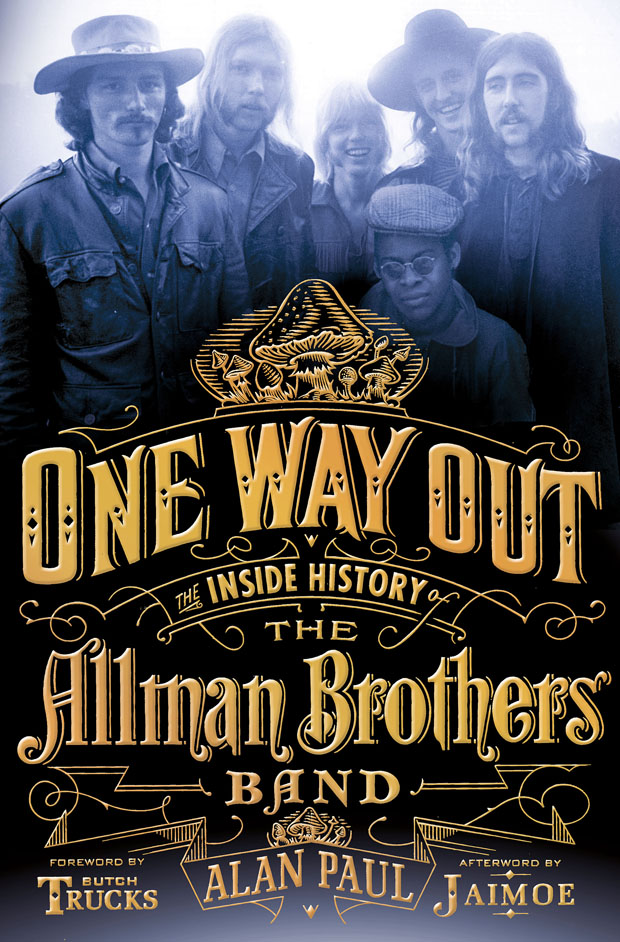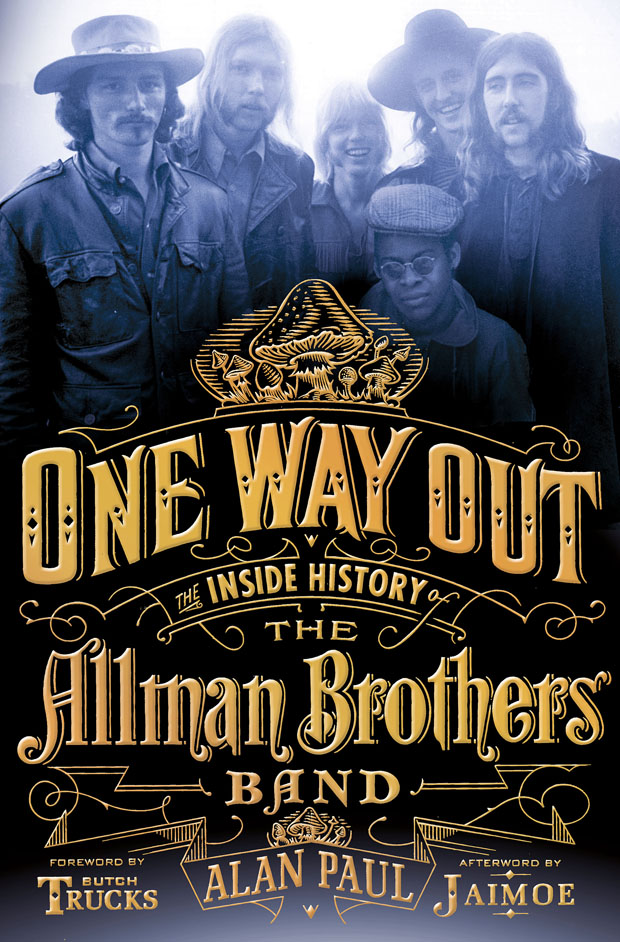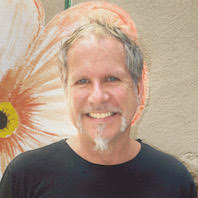Book Review: 'One Way Out: The Inside History of The Allman Brothers Band'

Democracies very rarely work in rock bands.
Most successful groups usually have one dominant member (maybe two) who provides the artistic vision the rest can respect and rally around.
Without strong leadership, you can usually kiss any band goodbye. This appears to be the underlying lesson in Guitar World writer Alan Paul’s excellent new book, One Way Out: The Inside History of The Allman Brothers Band (St. Martin’s Press).
Written with the Allman Brothers Band’s participation, One Way Out is perhaps the most in-depth look at one of America’s most beloved, but thoroughly dysfunctional ensembles.
With slide guitar genius Duane Allman at the helm, the Brothers started out strong and sure. They went from strength-to-strength in the late Sixties and early Seventies, becoming one of the world’s truly inspired improvising bands as evidenced by their landmark 1971 double album At Fillmore East.
The Allman Brothers Band was largely Duane’s conception, and it was his unflagging energy and incredible guitar playing that drove them to mesmerizing heights as they blended rock, jazz, blues and country in new and exciting ways. Unfortunately, the guitarist was killed in a motorcycle accident in October of ’71 just as the band was achieving large-scale commercial recognition.
All the latest guitar news, interviews, lessons, reviews, deals and more, direct to your inbox!
In the aftermath, co-guitarist Dickey Betts picked up the baton, and for a while it looked like he would lead them to new-found glory. Their next two albums, Eat a Peach (1972) and Brothers and Sisters (1973) were artistic and commercial triumphs. However, Betts’ temperamental behavior made him a less than ideal captain, and over the next several decades the band split into warring factions that became the stuff of legend. Astonishingly, they continued to play solid, often inspired, music and somehow survived—but just barely.
The band’s incredible rise and their trials and tribulations naturally make for a great story and engrossing reading. Alan Paul has written about the Allmans in Guitar World for the last 25 years, and his depth of knowledge shows.
He manages to get every surviving member of the band—past and present—to be shockingly honest in their assessment of their music and relationships with each other. Even the group’s famously easygoing guitarist Warren Haynes gets into the act as he expresses his exasperation at the sometimes strange and unpredictable behavior of his gifted, but flawed, band mates.
The book is written in an oral history format, so the stories are salty, unfiltered and straight from the horse’s mouth. It’s a good thing, too, because the Allmans’ story is often so bizarre and harrowing it’s hard to believe it’s true. The word “definitive” gets tossed around so often it has lost some of its meaning, but this 400-page journey into the heart of rock and roll darkness deserves the accolade.
The book also makes you wonder just what would’ve happened if Duane had been around to kick some butt …
One Way Out: The Inside Story of the Allman Brothers (St. Martin’s, February 18) is available for pre-order at Amazon.com. For more about Alan Paul, visit alanpaul.net.
Brad Tolinksi is the editor-in-chief of Guitar World magazine.
The March 2014 issue of Guitar World magazine is available now: Eric Clapton's 50 Greatest Guitar Songs, How the Layla Sessions Almost Destroyed the Allman Brothers Band, Mike Bloomfield, Johnny Winter and More! It's available at newsstands and at the Guitar World Online Store.


A long time ago in a galaxy far, far away Brad was the editor of Guitar World from 1990 to 2015. Since his departure he has authored Eruption: Conversations with Eddie Van Halen, Light & Shade: Conversations with Jimmy Page and Play it Loud: An Epic History of the Style, Sound & Revolution of the Electric Guitar, which was the inspiration for the Play It Loud exhibition at the Metropolitan Museum of Art in New York City in 2019.

